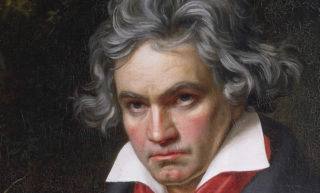A sense of an ending and the cementing of an art form
Sinfonieorchester Basel
17 and 18 November 2021
Oliver Schnyder, piano
Michail Jurowski, conductor
Ludwig van Beethoven - Piano Concerto 5 in E flat major
Dmitri Shostakovich - Symphony 15 in A major, op. 141
The outspoken French conductor and composer Pierre Boulez is said to have likened Shostakovich’s music to olive oil. A second or third pressing of Mahler’s music, that is. The Russian composer still had a high regard for the formal aspects of the symphony – he wrote fifteen works in the genre – and has hence sometimes been dismissed as unimaginative.
Bernard Haitink had a more ambiguous relationship with Shostakovich’s music. The Dutch conductor preferred not to play the master’s second, third, eleventh and twelfth symphonies on the grounds that they were pieces written to please the Communist Party. The composer’s Fifteenth Symphony, however, was close to his heart.
Shostakovich’s music may have divided the world of music, but almost fifty years after his death the communis opinio is that he was possibly the greatest symphonist of his generation. His fifteenth is a notable achievement, a favourite not only with Haitink but many others as well.
Working on a rough outline made in the early months of 1971, Shostakovich resumed work on what was to be his last symphony in the summer of that year, shortly after being admitted to hospital. In the 1960s he had been diagnosed with polio, later suffering from a number of heart attacks as well. Drinking and smoking further affected his frail health. Death seemingly chasing him, the work is mostly reflective in nature. Not only is it somewhat introverted, quotations from Rossini, Wagner, Beethoven, and his own symphonies impart to it an added sense of looking back. Nonetheless, the first movement, propelled by the first theme heard on a solo flute, and the famous galop from Rossini’s overture William Tell, exudes a dynamic vitality. Yet it is a vitality that also evokes the “emotional emptiness in which people lived under the dictatorship of the time”, as the German conductor Kurt Sanderling put it.
The final movement, commencing with the “fate motive” from Wagner’s Der Ring des Nibelungen (in the brass section) followed by the opening theme from his Tristan und Isolde, reinforces that sense of an ending.
Shostakovich died in 1975. Soon after that, on tour in Moscow with the London Philharmonic Orchestra, Haitink was invited by the composer’s widow to visit the apartment she had shared with her late husband. In his study Haitink was struck by the presence of two busts: those of Mahler and Beethoven, Shostakovich’s two most revered predecessors.
Although Beethoven’s Fifth Piano Concerto cannot be considered a late work, it also marks an ending in that it concludes a period characterised by compositions written in a grand, heroic style – one explanation why the concerto is known as the “Emperor” in English-speaking countries. Thereafter, Beethoven’s writing became more intimate. However, the concerto itself was a new beginning, too. Conceived in 1809, the work appeared in print in 1810. By the time it was first performed in Vienna in 1812, connoisseurs had had ample time to familiarize themselves with it. For the first time, he had written out the score in meticulous detail, even providing a separate part for the soloist (including cadenzas), thus enabling her to practise it at home. While until then things revolved around a work’s first performance by the often improvising composer, now the composition itself, in all its details, had become the main achievement. And so the concerto as an art form was cemented.
These English program notes have been published in the magazine of the Sinfonieorchester Basel.






Comments